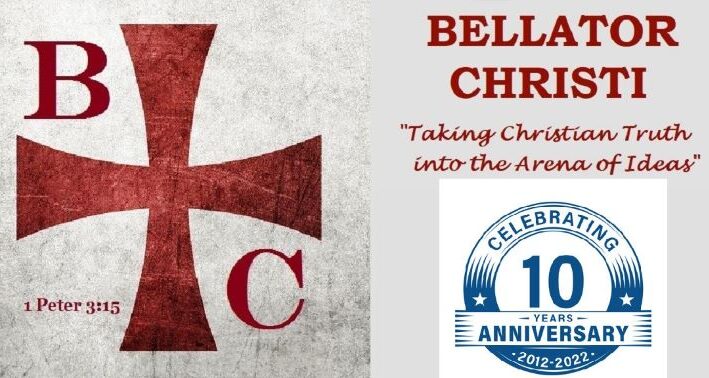By: Daniel Merritt, PhD | January 15, 2023
The Doctrine of Biblical Inspiration is without question a most important Christian doctrine. If the Bible is not inspired, then the writings within the covers of the Sacred Volume are merely the writings and thoughts of men on historical and religious matters divorced from the breath of God giving life to the words upon the pages. The Apostle Paul was clear in his estimation of the Bible, when he wrote in 2 Timothy 3:16, “All scripture is given by inspiration of God, and is profitable for doctrine, for reproof, for correction, for instruction in righteousness” (KJV). “All scripture” refers to both the OT and NT writings.
The Greek phrase translated “inspiration of God” is a word found nowhere else in the NT. Using the word θεοπνευστος (theopnustos theh-op’-nyoo-stos), many scholars contend it is a word unique to Paul used to describe the divine influence upon Scripture. Theos means “God” and the word pneus from pneo meaning “breathe or to breathe out;” therefore, literally meaning “God-breathed.”[1] Peter wrote that the Holy Spirit “moved” upon the biblical writers to write down divine utterances (2 Peter 1:21). Clearly Paul and Peter assert that the writings within the Bible are inspired, the words being breathed upon by the Triune God.
When one asserts the Bible is divinely inspired, two questions immediately present themselves: (1) What is meant by inspiration? (2) What determines which books are inspired and which ones are not?
What is Meant by Inspiration?
First, what is meant by inspiration? Before looking at what divine inspiration means, it would prove profitable to look briefly at what inspiration does not mean. [2] First, biblical inspiration is not simply human genius or inspiration. The biblical writers were much more than writers like Frost, Twain, Poe, or Shakespeare. The writers of the Bible ranged from farmers like Amos, to the well-educated like Paul, and their ability to communicate heaven’s message required more than human genius.
Second, biblical inspiration is not simply illumination of the writers. Biblical inspiration is much more than merely the intensifying and elevating of the religious perception of the writers.
Third, biblical inspiration is not mechanical dictation. The biblical writers were not passive instruments or robots who “channeled” the Holy Spirit devoid of consciousness or human thinking and personality.
Fourth, biblical inspiration does not remove human personality. It is clear upon reading the biblical writings, the Lord used each writer’s unique personality, literary style, temperaments, and geographical and educational backgrounds without eliminating their uniqueness.
Fifth, inspiration does not mean verbatim quotations and grammatical uniformity among the writers. A lack of grammatical uniformity among the writers is not to be considered as an argument against inspiration, but it is the uniqueness of the individual writer and, as well, acknowledging that grammatical uniformity and rules of grammar would vary from one geographical area to another.
Sixth, biblical inspiration does not mean that translations or versions are inspired, but the original autographs are. While the original autographs have long since vanished, the same God who divinely inspired the original writings has preserved His revelation to humanity through the work of dedicated copyists and scholars as found in the preservation of thousands of biblical manuscripts.
What is Biblical Inspiration?
What then is biblical inspiration? In defining divine inspiration, Carl Henry succinctly writes:
Inspiration is the supernatural influence of the Holy Spirit whereby the sacred writers were divinely supervised in their production of Scripture, being restrained from error, and guided in the choice of words they used, consistently with their disparate personalities and stylistic peculiarities.[3]
Divine inspiration means that the Lord directed, superintended, and by the Holy Spirit worked within each writer’s particular deficiencies, flaws, and imperfections so as to not allow any human error to be imposed or intruded upon His holy Word. Being divinely inspired means the Bible is infallible and without error. Divine inspiration asserts that God, by the Holy Spirit, has guaranteed the authenticity and reliability of the very words that were penned without dispossessing the writers of their individuality or personality. Divine inspiration means the whole of the Bible, both the Old and New Testament, is inspired not just part of it. Divine inspiration means the very words, not just the thoughts and concepts, are inspired. Divine inspiration means the Bible is accurate in every area of reality in which the authors wrote and is sufficient. It is authoritative in guiding one to salvation and for faith and practice.
Which Books are Inspired?
Having briefly looked at what inspiration does and does not mean, the second question that needs to be addressed is, “What determines which books are inspired and which ones are not?”
When one speaks of the “canon” what is meant? The word “canon,” from the Greek word kanon, simply means “measuring rod” or “ruler” or “standard” by which something is judged. When one refers to the canon of Scripture, what was the standard or rule by which a book was judged to be inspired. Since Protestant, Catholics and Eastern Orthodox have the same 27 books in the New Testament, the “rule” or “standard” for judging the canonization of NT books will be considered first. [4]
5-Fold Test
The test by which NT books were recognized as being inspired basically became five-fold (While not mnemonic criteria, with the rise of heretical groups and spurious writings, such five-fold “rule” or “standard” quickly evolved into churchwide consensus for judging a book as to it being inspired.): (1) The book had to be written by an apostle or have apostolic authority; (2) The book contained truth in agreement with the rest of Scripture; (3) The book must be recognized by the Church as a whole, giving testimony of unity from the Holy Spirit in its acceptance; (4) The book must be divinely and morally authoritative, being unique from other documents; and (5) The book must have intrinsic power. [5]
- Apostolic Authority. Early Church Fathers contended that what made writings divinely authoritative and profitable was “what came from the living and abiding voice” of an Apostle. F.F. Bruce writes, “If a writing was the work of an apostle or of someone closely associated with an apostle, it must belong to the apostolic age. Writings of later date, whatever their merit, could not be included among the apostolic or canonical books. [6]
- Contradicts No Other Part of Scripture. Canonicity implied that no NT book contradicted orthodox teachings and beliefs of the early Church. Bruce writes, “In other words, they had recourse to the criterion of orthodoxy. By ‘orthodoxy’ they meant the apostolic faith – the faith set forth in the undoubted apostolic writings and maintained in the churches which had been founded by the apostles.” [7]
- Widespread Church Acceptance. Writings that did not adhere to Christian orthodoxy were rejected by the church and writings that were true to the apostolic faith gained churchwide approval and acceptance. Neil Lightfoot writes, “A book first has divine authority based on its inspiration, and then attains canonicity due to its general acceptance as a divine product.” [8]
- Authoritative and Unique. Each canonized book separated itself from other literature as it speaks in beautiful terms of the authority of Christ, as well, as revealing the nature and moral authority of Christ which was consistent with other accounts of His life. H. Van Doren has poetically written, “Each book must have the same relation to revelation as a ray of light does to the sun.” [9]
- Intrinsic Power. Contained within each canonized NT book is found within its divinely inspired words the power to instill hope, offer forgiveness, extend mercy, challenge, and convict the reader, and point humanity to the grace that has been provided in Jesus Christ. Jesus said that His words are alive and breathe with His very Spirit (John 6:63).
Our current 27 books of the NT over time attained canonicity by discernment as to their divine inspiration and their meeting the five-fold criteria which served as a “rule” or “standard” revealing the God-breathed truth contained within the pages of each book. For instance, soon after the letters of Paul were written and circulated, meeting the five-fold criteria, Peter stated that Apostle’s letters were considered Scripture (2 Peter 3:15). As heretical groups and spurious writings arose, the inspired writings gradually distinguished themselves as the most trustworthy, reliable, and beneficial of the early Christian writings. While the NT evolved over the course of the first 250 to 300 years of Christian history, by the end of the second century most of the 27 books in the New Testament canon had already gained widespread acceptance.
Canons of NT Writings
While several canons of NT writings arose after the last NT book was written about 95 AD, the most important of those canons is the Muratorian Canon, discovered around 1738 by Italian historian Ludovico Antonio Muratori. The discovered document contained what most scholars believe to be the oldest list of the NT writings. Written around 170-200 AD, the listing of inspired writings included 22 of our now 27 books: the Four Gospels, Acts, all 13 of Paul’s letters 1 and 2 John, Jude and Revelation. The canon does not include Hebrews, James, 1 & 2 Peter, and 3 John and names a few books eventually discerned to be uninspired: Wisdom of Solomon, the Apocalypse of Peter, and The Shepherd of Hermas. The Muratorian Canon gives testimony to the evolving process of the NT canon, as well, as there was widespread agreement over the core from of the canon early on. [10]
Church Fathers
The Four gospels seemed to have been embraced early as being inspired, as Irenaeus of Lyons (130-202 AD), writes in Against Heresies (c. 180 AD), “From this it is clear that the Word, the artificer of all things, being manifested to men gave us the gospel, fourfold in form but held together by one Spirit.” [11] In his writings, Irenaeus quotes from or alludes to almost all the books that comprise the New Testament.
When one examines the citations of Clement of Alexandria (195-202 AD) and Tertullian (205-225 AD), one discovers numerous references from almost every New Testament book. While the writings of Clement and Tertullian do not yield citations from Philemon, 2 and 3 John and Jude, one can take scriptural quotes found in their surviving works and reconstruct almost the entire New Testament. [12]
By the time of Athanasius of Alexandria (c. 296-373 AD), the NT canon had evolved to the 27 books we now have. The first historical reference listing the exact 27 writings now observed in the New Testament is in the Easter Letter of Athanasius in 367 AD. His reference indicates that the canonicity of the NT had been settled and that these are the only recognized writings to be read in a church service. The first time a church council ruled on the list of inspired writings allowed to be read in church was at the Synod of Hippo in AD 393, indicating the issue had been settled for some time. [13]
Conclusion
Some would like a more “supernatural” aspect of the development of the NT canon; however, part of the historical reliability and validity of the NT comes from the very fact that its development can be historically traced, tested, and approved over time. Quoting again Lightfoot, “A book first has divine authority based on its inspiration, and then attains canonicity due to its general acceptance as a divine product.” [14] There are so many evidences of the Bible’s inspiration that an article of this nature can scarcely begin to touch on the subject. However, one who opens the Sacred Volume can be assured the superintending work of the Holy Spirit has worked through men and history to preserve for us those writings which are God-breathed.
In the next post, Defining Biblical Inspiration – Part II, the canonicity of the OT and the Apocrypha will be considered.
About the Author

Dr. Merritt is no stranger to Bellator Christi. He has been featured as a guest contributor on the website for many articles, including one of his biggest hits, “Voltaire’s Prediction: Truth or Myth,” before joining Bellator Christi as a regular contributor. Dr. Merritt received both a Ph.D. and a Th.D. and has studied theology, philosophy, and biblical studies at North-Western Theological Seminary, Southeastern Baptist Theological Seminary, and Campbell University. Dr. Merritt has published such books as Writings on the Ground and Dealing Effectively with Church Conflict. Merritt serves as the Director of Missions for the Surry Baptist Association after serving numerous churches in northwestern North Carolina. He also teaches and directs the Seminary Extension of the Southern Baptist Convention in the Mount Airy, NC area. In his spare time, Merritt serves as a track coach, training the next generation of runners.
Footnotes
[1] A. C. Hervey, The Pulpit Commentary Vol. 21, “2 Timothy,” (Grand Rapids, Michigan: Wm. B. Eerdmans Publishing Company, 1950), 43.
[2] For a more detailed discussion on what inspiration is not, see Daniel Merritt, A Sure Foundation: Eight Truths Affirming the Bible’s Divine Inspiration, (Bloomington, IN: CrossBooks, 2011), 23-26.
[3] Frank E. Gaebelein, Gen. Ed., The Expositor’s Bible Commentary, Vol. 1, “The Authority and Inspiration of the Bible,” Carl Henry, (Grand Rapids: MI: Zondervan, 1979), 25.
[4] Frank E. Gaebelein, Gen. Ed., The Expositor’s Bible Commentary, Vol. 1, “The Canon of the New Testament,” Andrew F. Walls, (Grand Rapids: MI: Zondervan, 1979), 631.
[5] Paul E. Little, Know What You Believe, (Wheaton, IL: Victor Books, 1970), 20-21. Also see, F.F. Bruce, The New Testament Documents: Are they Reliable? (Downers Grove, IL: Inter-Varsity Press, 1981), 4-16.
[6] F.F. Bruce, The Canon of Scripture, (Downers Grove: Inter-Varsity Press, 1988, 259-260.
[7] Ibid, 260.
[8] Neil R. Lightfoot, How We Got Our Bible, (Grand Rapids, MI: Baker Book House, 1963), 83.
[9] Quote of W.H. Doren found in Joseph Exell, The Biblical illustrator, Vol. II, “John,” (Grand Rapids, MI: Baker Book House, 1983), 2.
[10] Walls, The Canon of the New Testament, 640-641. See also Bruce, Reliable, 17, 49.
[11] Against Heresies, III, 11.8
[12] Lightfoot, 84-85.
[13] Ibid, 85.
[14] Ibid, 85-86.
Copyright, 2023. BellatorChristi.com.





